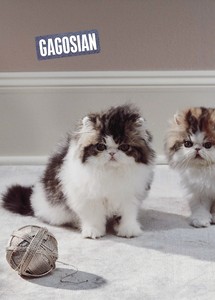
Now available
Gagosian Quarterly Spring 2023
The Spring 2023 issue of Gagosian Quarterly is now available, featuring Roe Ethridge’s Two Kittens with Yarn Ball (2017–22) on its cover.
Gagosian Gallery is pleased to announce Dan Colen's first solo exhibition in Paris. “Out of the Blue, Into the Black” is a eulogy in three parts comprising paintings, installation, and a sculpture.
The title conflates two songs that open and close Neil Young’s 1979 album Rust Never Sleeps: “Hey Hey, My My (Into the Black)” and “My My, Hey Hey (Out of the Blue)", with its famous line “It’s better to burn out than to fade away,” which Young wrote in reference to his personal fears of becoming obsolete and, correspondingly, to the then-recent deaths of Elvis Presley and Sid Vicious, and which was invoked many years later by Kurt Cobain in his suicide note. Similarly, Colen has used the lyrics here to evoke a fear of the erosion of influence, to point to the ways in which death inflects celebration, and to remind us of what we try to hold on to, even as it eludes our grasp.
Colen began making “confetti” paintings in the wake of his friend Dash Snow’s death in 2009. Like the ancient pagan custom of throwing confetti at celebratory events, the paintings are exercises in the precious yet momentary qualities of joy and magic. The confetti paintings exist both as actual Mylar confetti adhered to canvas, and, in this instance, as trompe l’oeil oil paintings. To date, Colen has used trompe l’oeil not only to simulate, but also to elucidate the absurdity and inadequacy of illusion. The memorial quality of this series is underscored by its title, “Moments Like This Never Last," which Colen took from Snow, who borrowed it from the Misfits for his second solo exhibition in New York in 2005.
The installation in the gallery recalls the NEST projects that Colen made with Snow by shredding phone books and tearing open feather pillows to create orgiastic environments. But here the playful, boisterous concept takes a dark and morbid turn. The space, tarred and feathered from top to bottom, becomes a stand-in for the body on which pain and humiliation is inflicted by the vernacular mob tradition. Thus the exuberant life and gleeful tumult of the nests is stilled forever, and the viewer is left enveloped in a space where the once whirling feathers and leaves of paper are stuck fast to viscous, tar-blackened surfaces, like a bird trapped in a lethal oil slick.

The Spring 2023 issue of Gagosian Quarterly is now available, featuring Roe Ethridge’s Two Kittens with Yarn Ball (2017–22) on its cover.
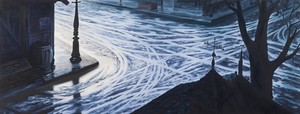
In this interview, curator and artist K.O. Nnamdie speaks with artist Dan Colen about his recent show in New York: Lover, Lover, Lover. Colen delves into the concept of “home” as it relates to his work, specifically the Mother and Woodworker series. Thinking through the political and historical implications of “homeland” in the context of the artist’s relationship with Israel and America, the two consider the intersections between these paintings—the final group of his Disney-inspired canvases—and Colen’s work with Sky High Farm, New York.
In this video, Deana Haggag, program officer, Arts and Culture at Mellon Foundation; Dan Colen, artist and founder of Sky High Farm; Linda Goode Bryant, artist and founder of Project EATS; and Diya Vij, curator at Creative Time sit down together to explore the roles of artist and audience, place and accessibility, legacy, capital influence, and individual vs. collective agency as they relate to artmaking today.
In this video, Thelma Golden, chief curator and director of the Studio Museum in Harlem; Tremaine Emory, founder of Denim Tears and creative director of Supreme; Father Mike Lopez, founder of the Hungry Monk Rescue Truck; and artist Anicka Yi sit down to explore how the concept of community has shaped their work, and the power in seeing the places we live, our histories, and even our bodies as porous, interdependent, and alive.
In this video, Veronica Davidov, visual and environmental anthropologist; Karen Washington, activist, farmer and co-founder of Black Urban Growers (BUGS) and co-owner of Rise & Root Farm; Candice Hopkins, curator, writer and executive director of Forge Project; and Haley Mellin, artist, conservationist and founder of Art to Acres sit down to explore the tensions and overlaps between different efforts to define, use, and protect land.
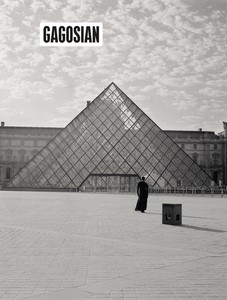
The Summer 2021 issue of Gagosian Quarterly is now available, featuring Carrie Mae Weems’s The Louvre (2006) on its cover.
In this video, Dan Colen speaks about his inspiration in founding Sky High Farm as a way to address food insecurity and improve access to fresh, nutritious food for underserved communities in New York. Established in 2011, the 40-acre farm raises pasture-based livestock and grows organic fruit and vegetables exclusively for donation.
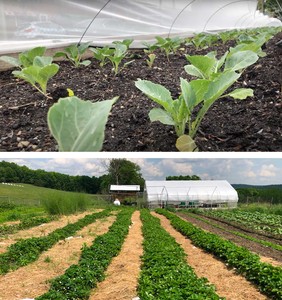
Dan Colen and Linda Goode Bryant are both artists who have founded nonprofits devoted to food justice. Here they speak about art, food, and life, including how they arrived at farming and the urgency of their projects’ missions during the current health crisis.

Dan Colen joins Francesco Bonami in a conversation about absence and nostalgia, decadence and decay, progress and failure—and about help, the theme of his most recent body of paintings.
Against the backdrop of his survey exhibition Sweet Liberty, Dan Colen speaks about his work with Hans Ulrich Obrist, starting with his earliest interest in art and continuing up to the recent Desert paintings (2015–19).
Gagosian Quarterly presents Dan Colen’s Carry On Cowboy. This performance first took place during the exhibition Dan Colen: High Noon at Gagosian, Beverly Hills.
Gagosian Quarterly presents Dan Colen’s At Least They Died Together. This performance first took place during the exhibition Dan Colen: High Noon at Gagosian, Beverly Hills.
Douglas Fogle moderates a conversation between Dan Colen and Dimitri Chamblas following the premiere of Colen’s two performance pieces At Least They Died Together and Carry On Cowboy.
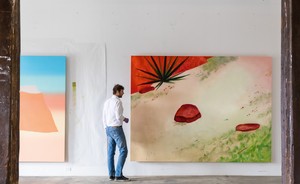
We visit the artist’s studio in Brooklyn, New York, to get a behind-the-scenes glimpse of his new series of Desert paintings while he prepares for an upcoming exhibition in Beverly Hills. Text by Ben Eastham.

Meredith Mendelsohn discusses the impact of Free Arts NYC and its mission to foster creativity in children and teens, on the occasion of its twenty-year anniversary.
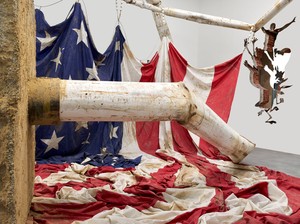
Dan Colen speaks with Ali Subotnick on the occasion of his exhibition Dan Colen: Sweet Liberty, at the Newport Street Gallery in London.
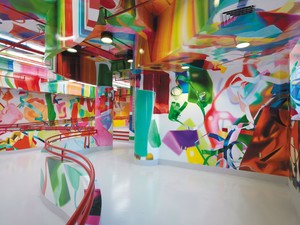
Derek Blasberg speaks with Diane Brown, president and founder of RxART, and with contributing artists Dan Colen, Urs Fischer, and Jeff Koons about the transformative power of visual art.
In this video from the Louisiana Channel, Dan Colen sits down to talk about friends like Ryan McGinley and Dash Snow, and how his art developed to a place of celebration.